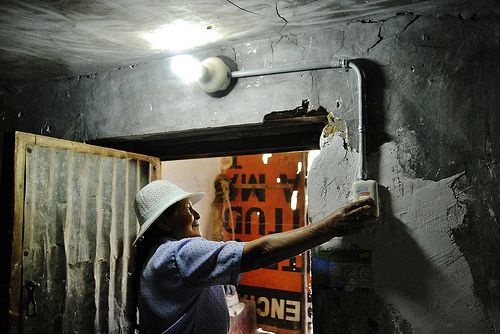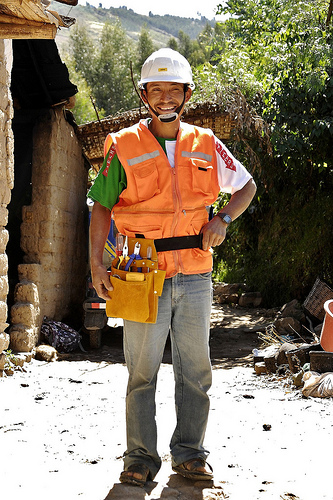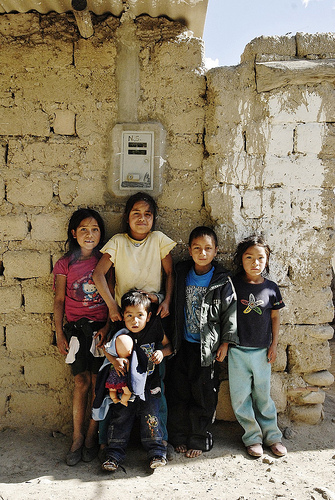Knowledge fuels change - Support energypedia!
For over 10 years, energypedia has been connecting energy experts around the world — helping them share knowledge, learn from each other, and accelerate the global energy transition.
Today, we ask for your support to keep this platform free and accessible to all.
Even a small contribution makes a big difference! If just 10–20% of our 60,000+ monthly visitors donated the equivalent of a cup of coffee — €5 — Energypedia would be fully funded for a whole year.
Is the knowledge you’ve gained through Energypedia this year worth €5 or more?
Your donation keeps the platform running, helps us create new knowledge products, and contributes directly to achieving SDG 7.
Thank you for your support, your donation, big or small, truly matters!
Rural Electrification - Minimum Safety Standards for Household Connection
Overview
Brief introduction and summary of the main points to respect from Planning to Installation:
As rural electrification takes place in the most remote areas, where technical knowledge and understanding is mostly limited or even poor, the focus on safety should be a main target for all activities related to AC power connection. First of all the minimum of safety standards is defined by the National Standard. Each Country has such standards and these standards are the basis of all works to be done in the field of rural electrification. Even it’s often seen that they are very weak or sometimes not at all respected in surrounding areas, these standards should be the minimum work output!
How does work take place?
Most Projects work with local installation companies and tender for work and material. That is the first key to safety.
Means: Specifying work in terms of tendering for HH Installation and Infrastructure the content has to be according to the national standard, e.g. 230 V / AC, Single Phase Household connection. Subjects of interest are Color Code, Cross-section of wiring, Grounding / Earthing System and connection, Circuit Breaker and Metering connections.
The standards must be incorporated into the project; they should be introduced within the tender for installation and for material procurement and should be available for the respective companies.
Only proper isolated material and equipment shall be procured and installed. Mechanically fix, tight, installed material is the basis for good reliable and safe connections / installations.
A sample installation or a board where a sample installation is exemplary shown, including all details, helps for the introduction of the expected minimum standards before installation start. A Sample installation and a commissioning protocol for each connection helps to execute work in an ordered and appropriate manner as well as it is providing the legal framework.
Sign with Name and Address of installing Company / Technician with a telephone No. for Service and Maintenance cases. This gives the technician a higher feeling for responsibility of his work.
- Rain protection for outside installed Power Meters and Ready Boards
- UV protection for outside Cable and wiring with conduits
- Mechanical protection for cable and wiring inside the house
- A Ready board is always recommendable to ensure equal technical standard and safety.
- Safety approved and tested installation material, e.g. CEC, VDE, & others
- Fix and tight installation of cables, switches, lamps and other equipment
- Cable “pulling protection” sothe cable wiring cannot be pulled out of its connection port by its own weight nor by individuals through “loose hanging” or so called “bird swing“
- Insulated connections with Screw cap connectors
- Proper grounding for each connector, a small earthing rod per connection is standard in most countries but seldom realized in remote areas
- Proper dimensioning of Circuit breaker and Cable cross section
The following Reports have some exemplary installation samples: Best practice guide for planing
Project Examples
Safe Electrical Installations in Peru
Introduction
In recent years Peru has begun to experience the much-anticipated economic growth and stability that we have been seeking for decades. But a real improvement in the development of the country must always go hand in hand with plans to allow for modernization of the most remote regions. In this regard, the National Rural Electrification Plan is one of the pillars for the development of remote areas and signifies the creation of opportunities in the new millennium.
Within the strategy implemented by the State, electric grids are constructed, meters are installed and the service goes on to be operated by a distributor. However, who oversees the installation of domestic facilities? How prepared are the inhabitants of a town that have never had electricity to meet the challenge of electrifying their homes?
The reality is that poor electrical connections pose a huge threat to the entire family. People have wires dispersed in haphazard ways in their rooms, they hang things on them and the joints are sometimes "protected" with plastic bags. Given this situation, the Energy and Development Project / GIZ - Peru implemented in 2009 the Safe Rural Home initiative, a program that promotes safe electrical installations in households in rural areas.
In this sense, Peru has a basic electrical standard which must be met in every dwelling; a practice normally overlooked in rural areas, where the resident simply wants to have light, not caring how. Therefore, the program seeks to complement the Rural Electrification Program and conducts activities in villages throughout the nation that still lack "power awareness"
within their homes. And with the advent of electricity to these villages, it is creating a framework for productive power and labor, which is also a need for secure facilities.
Moreover, with the arrival of electricity, the use of candles is virtually eliminated, representing a benefit to health by improving air quality in homes. This also improves eye health for the whole family, especially for children who suffer
when doing their schoolwork at night. Also, having access to devices such as a computer or TV, represents the possibility of real-time connectivity with the world.
It is important to mention that there are difficulties. While everyone wants to have light in their homes, many people are reluctant to install a secure connection because they think it will be very expensive. Sometimes, of about 50 families, only about 20 are motivated to hire an electrician or buy the right materials, despite recognizing the risk of poor installations. So they often end up doing the installations themselves and putting their lives at risk.
| The appropriate use of electric installations allows homes to be safer.[1] |
Working with Local Technicians and Providers
Initially, Safe Rural Home provided some free materials needed for a basic system, such as thermo-magnetic switches and tubes so that cables would not be exposed. They also considered the payment of the installation service by qualified
technicians. In return, the family contributed the other materials, such as the cable, outlets and
switches. Meanwhile, municipalities and community representatives exercise an active role in promoting the program, helping to encourage families to participate.
However, for an initiative to continue strongly over time, we must seek sustainability. Since 2011, a new strategy has been introduced that promotes the training of local electricians. Upon arriving to a community, it is essential to identify a person who knows something about electricity, enhance their knowledge and encourage him to become a technician and entrepreneur able to offer his services.
Finally, it is essential to forge alliances with electrical service providers, considering that they recognize the importance of generating awareness of access and use of electricity in residences, especially in rural areas. Therefore, it is a goal that these companies incorporate similar programs in their normal activities and in this way ensure the safety of their consumers and proper use of their services.
| José, a farmer from Huauya in Ancash, has been prepared to perform basic electric installations.[1] | Safe Rural Home has been working in 10 regions all over the country. It has reached 21,000 families, which represent a benefit for more than 100,000 individuals.[1] |
Further Information
References
This article was originally published by EnDev Peru in the first issue of the Amaray Magazine - Energising Development Peru published in August 2012 (Amaray N°1).






















